AMD has a new GPU for the volume professional graphics market. The AMD Radeon Pro W7600 brings the RDNA 3 graphics architecture to a lower price point in the professional space. This is a direct replacement of the RDNA 2 Radeon Pro W6600. AMD’s marketing messaging is quite interesting as well. Let us take a look at the newly launched card and its positioning.
AMD Radeon Pro W7600 8GB 130W Single Slot GPU Launched
First off, AMD is launching this $599 card alongside the lower-cost ($429) and lower-spec AMD Radeon Pro W7500 at roughly half the TDP (70W vs 130W.)
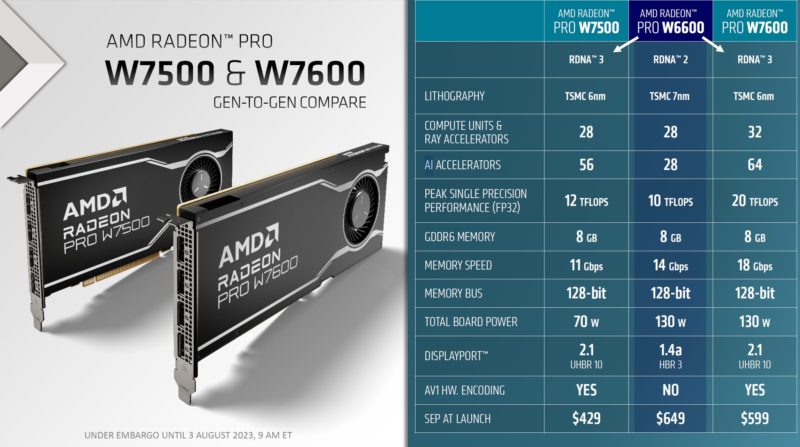
These new cards join the higher-end AMD Radeon Pro W7900 and W7800 GPUs that cost several times as much.
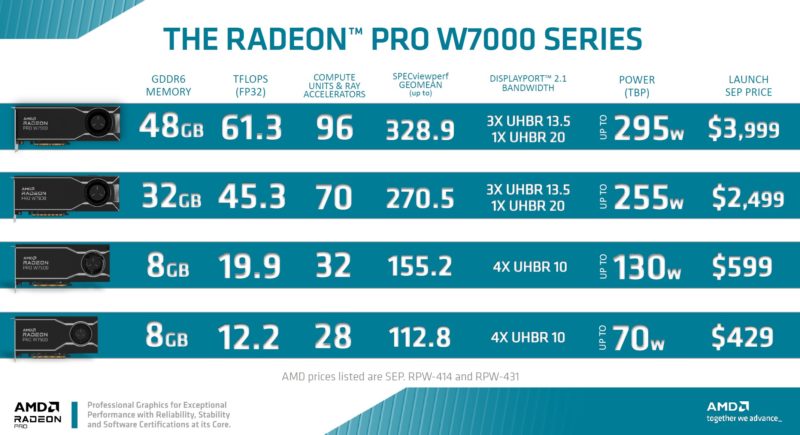
AMD’s focus is to penetrate the high-volume market, which makes sense as NVIDIA is focused on the high-end data center AI GPU market at the moment.
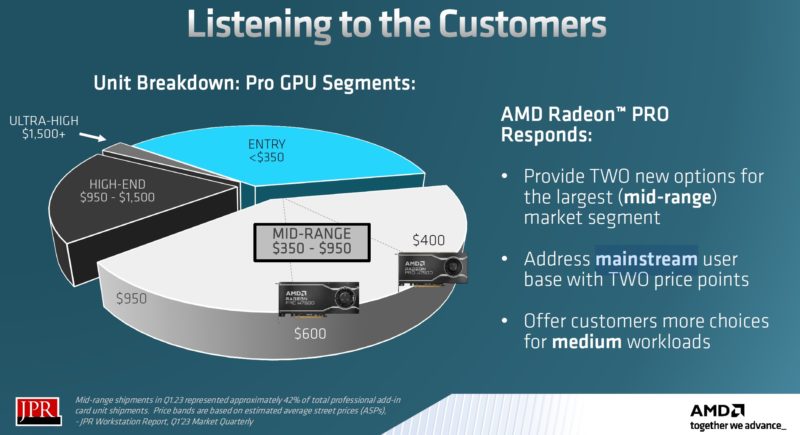
The new AMD Radeon Pro W7600 is based on TSMC 6. It adds four more compute units (32) and more than doubles the AI accelerators to 64 compared to its predecessor. The FP32 performance is also doubled. We get more memory bandwidth but the same 8GB of GDDR6 capacity.
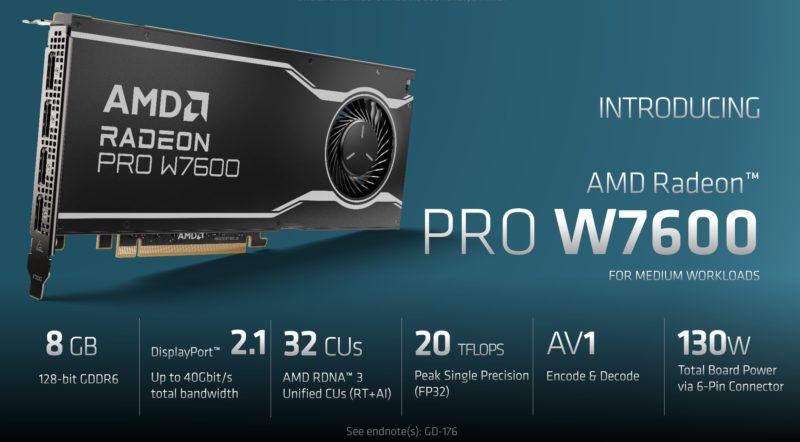
While AMD is happy to tout the fact it has DisplayPort 2.1 for high-end displays, one of the other exciting parts of this is the AV1 encoding in this generation that was not present in the W6600 series.
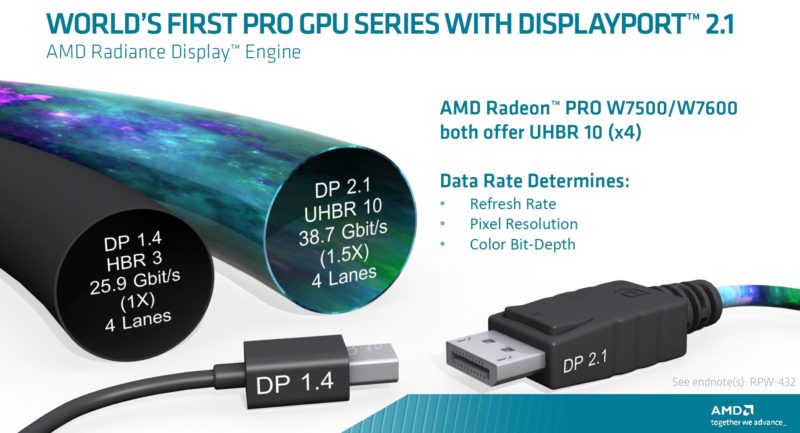
AMD is positioning the W7600 against the NVIDIA A2000. We will quickly note that while the W7600 is faster, it also is an 8GB 130W full-height card while the A2000 is a 12GB 70W half-height dual-slot card from a previous generation. The NVIDIA A2000 is designed for systems like the Lenovo ThinkStation P360 Ultra we reviewed.
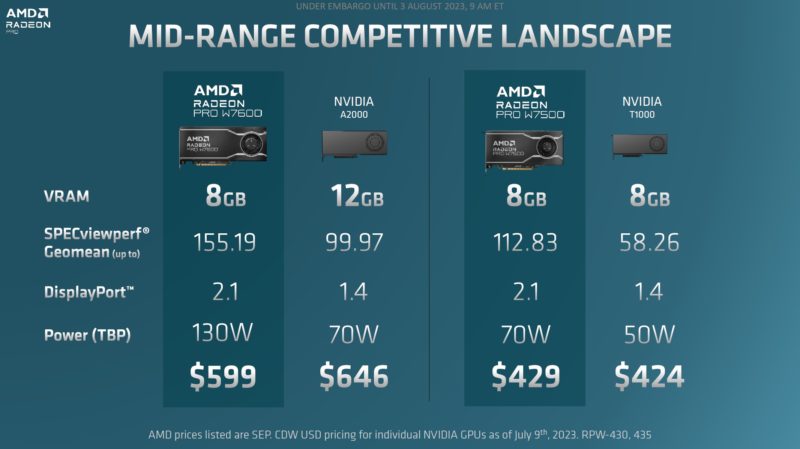
The interesting part about AMD’s messaging is the light discussion of AI. There was a single slide on AI that had a number of names of generative AI platforms on the left, many were repeated.
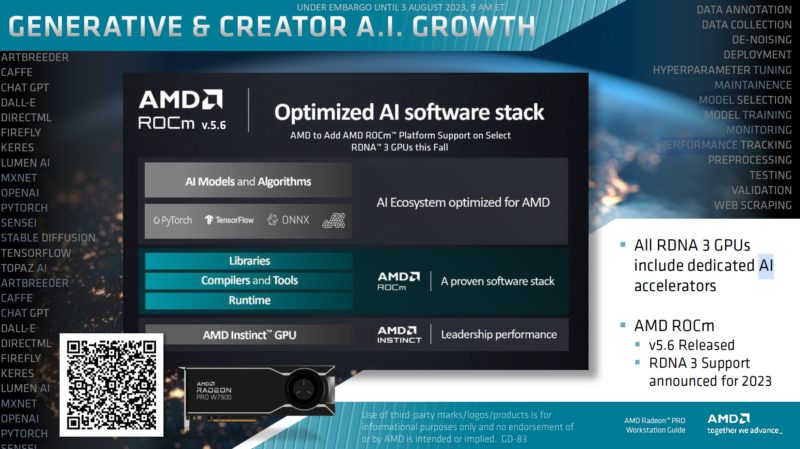
This is a big difference between how NVIDIA and AMD are marketing their cards. For creative professionals using things even as “simple” as the new-gen AI fill in the current Photoshop beta (which is awesome), this is a hot topic.
AMD Radeon Pro W7600 Photos
These cards arrived too late for our full review process to happen before the embargo, but we managed to edit the photos of the card. First, here is the box, a relatively small unit since the GPU is not massive.
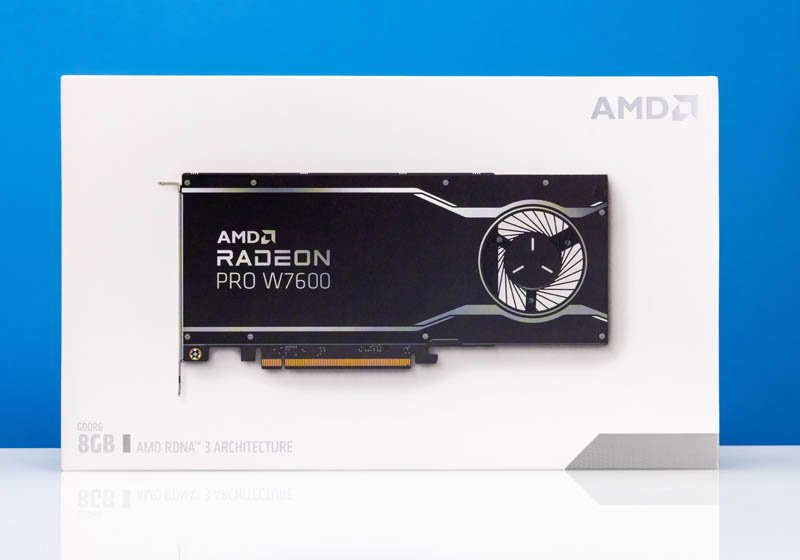
Opening that, we see the AMD Radeon Pro W7600 and key specs inside.
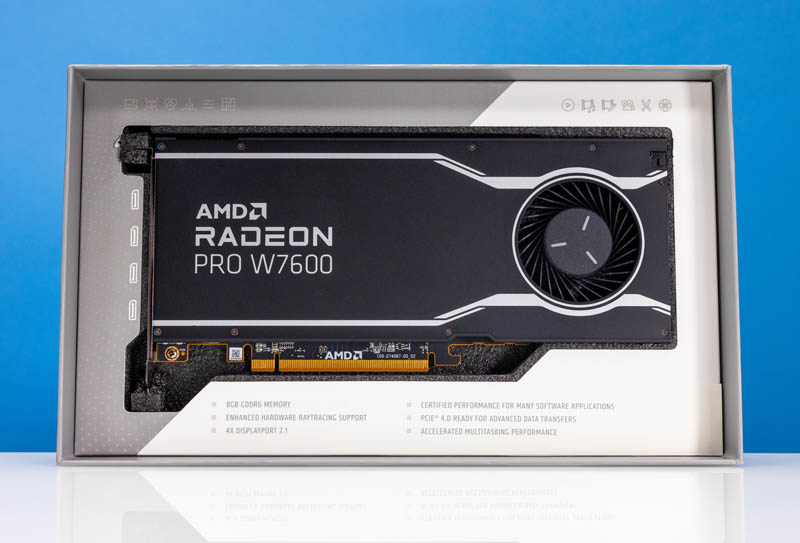
Here is the front of the card. Something that is quite noticeable is just how much space there is around the fan.
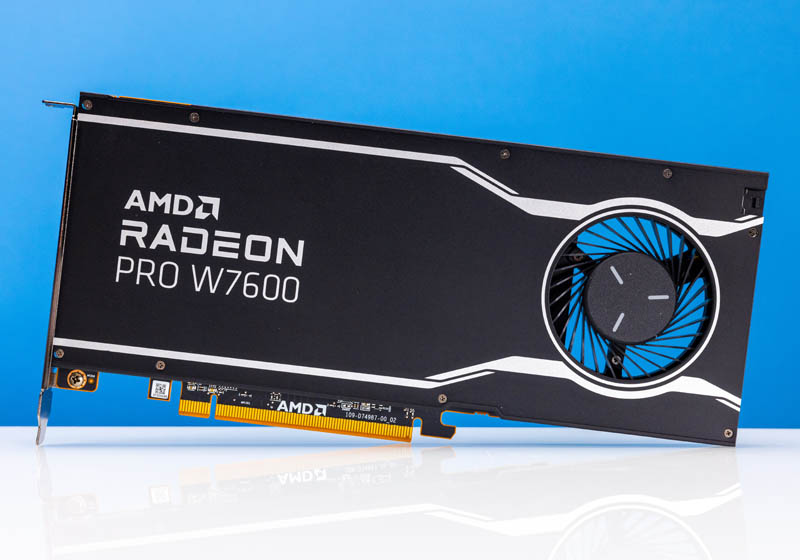
Here is the back of the card. To be a bit frank here, we were hoping for a backplate.
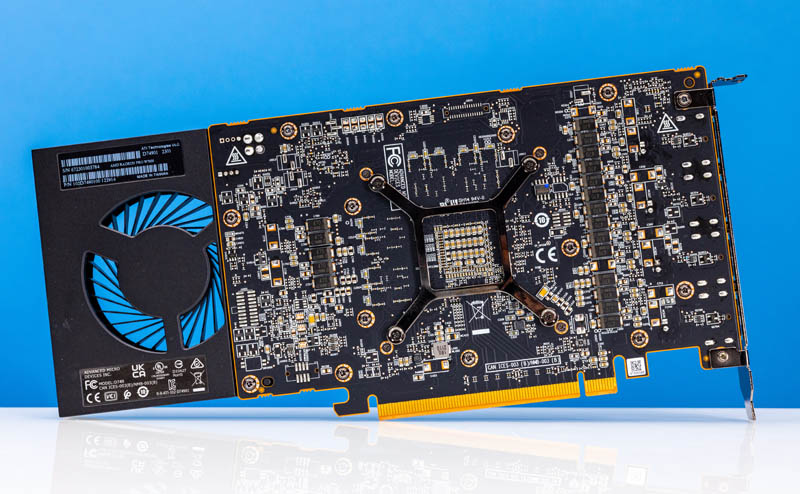
Here is the quad DisplayPort 2.1 output on the back of the card and the single slot bracket. If you compare this to the massive GPUs we used in this week’s Building 3x Intel Xeon W-3400 Workstation and Servers with the ASUS Pro WS W790E SAGE SE piece, this feels dainty in comparison.
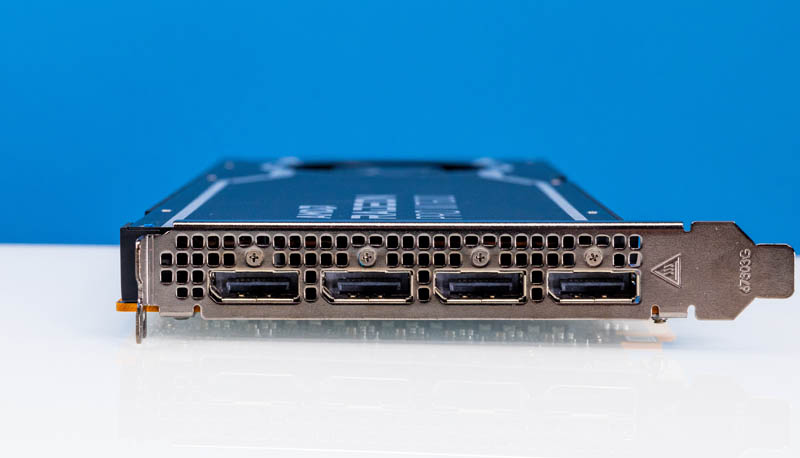
Since this is a 130W card, we have a single 6-pin power connector located in the proper position. We also have retention bracket holes used to secure the card in workstations that have GPU retention mechanisms.
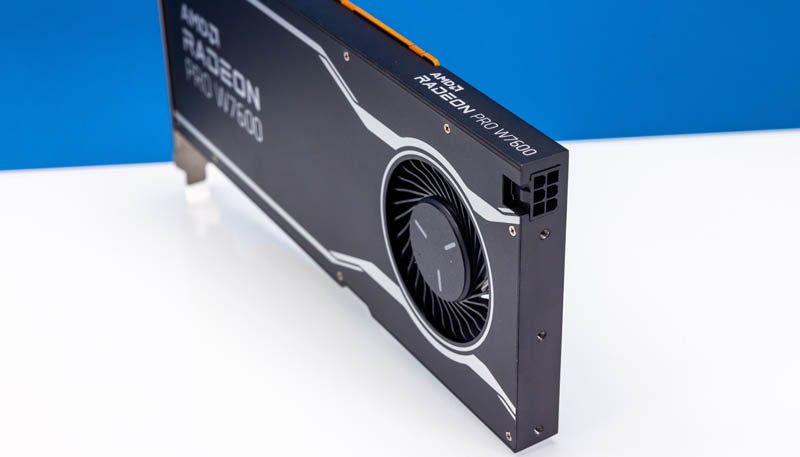
The top of the card has a hole. We are not entirely sure why, but there is a hole here and we managed to get some light inside.
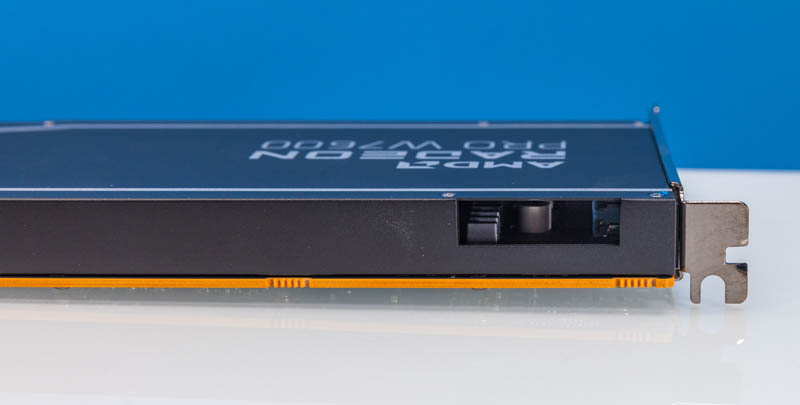
Overall, this is a straightforward card that, more importantly, should fit into many platforms given the modest power budget and single slot blower cooler form factor.
AMD Radeon Pro W7600 Performance Per AMD
We are going to have our full review in a bit. The cards arrived just as the team was taking a summer weekend off. Still, AMD provided its generational comparison versus the W6600.
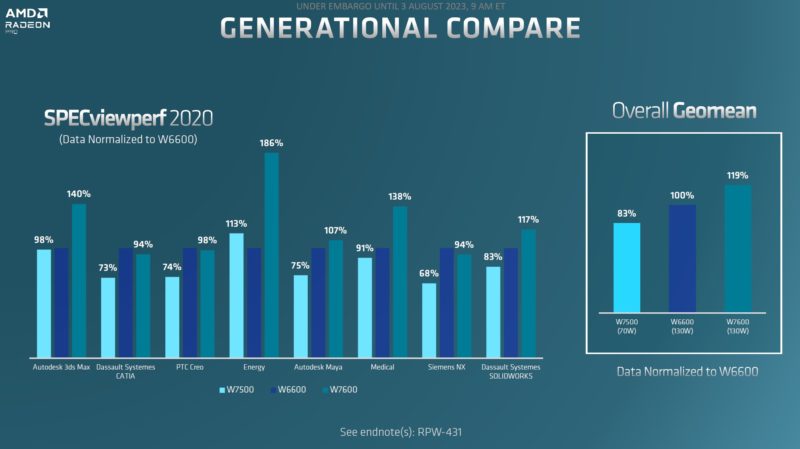
Here is the 3D content creation and animation compared to the NVIDIA A2000 and T1000.
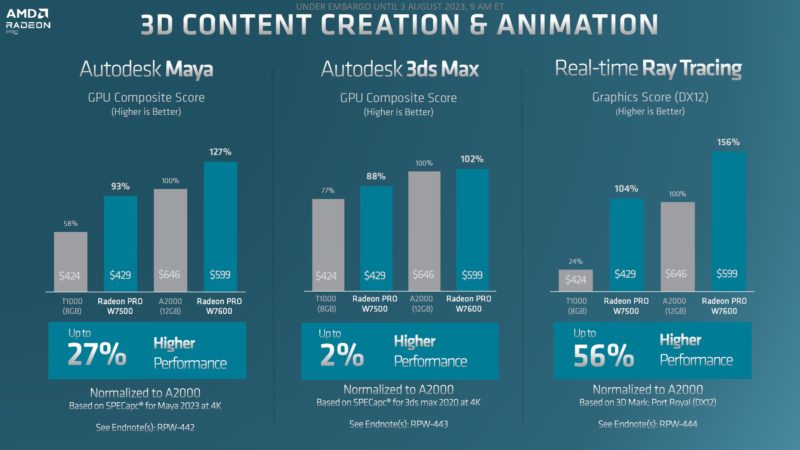
Here is the Digital Photography and Video comparison:
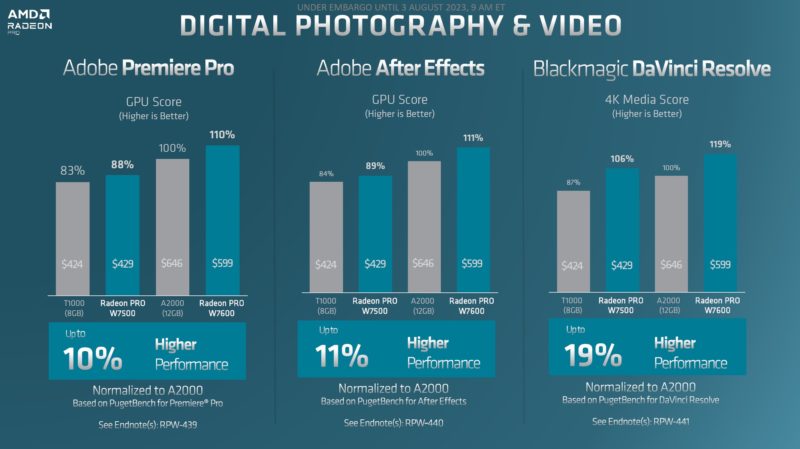
Here is the 3D CAD and Visualization:
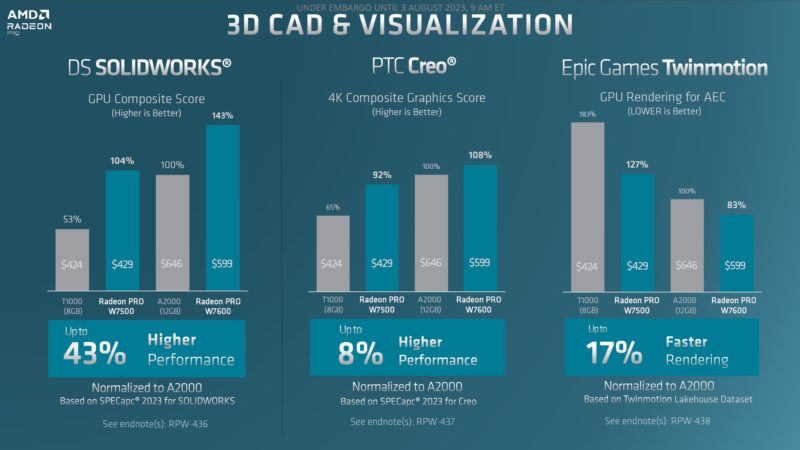
Even with doubling the FP32 TFLOPs on the card, AMD is still in the 2-56% range of the NVIDIA A2000 with the AMD Radeon Pro W7600 which is good, but it is not groundbreaking for NVIDIA’s Ampere generation. We have already looked at the Ada Lovelace NVIDIA RTX 6000 Ada Generation but NVIDIA has not filled out its stack yet.
Final Words
The interesting part about AMD’s messaging is the light discussion of AI given how hot of a topic that is and also how long some of those wait times are for gen AI applications. Still, it is nice to see a refresh of the lower-power professional GPUs. Many of the workstations we get to look at from large OEMs sell with GPUs that are in a class like the AMD Radeon Pro W7600, so it is great to see.
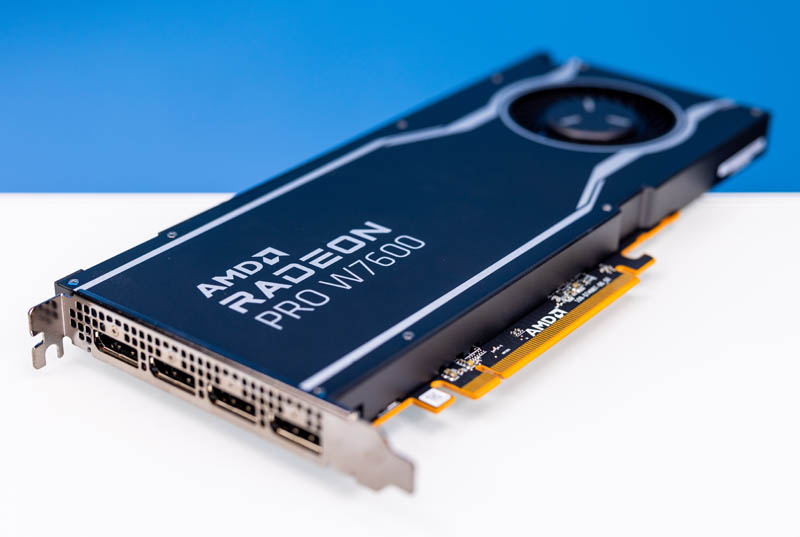
Stay tuned for more content on the AMD Radeon Pro W7600 and W7500 in the near future.

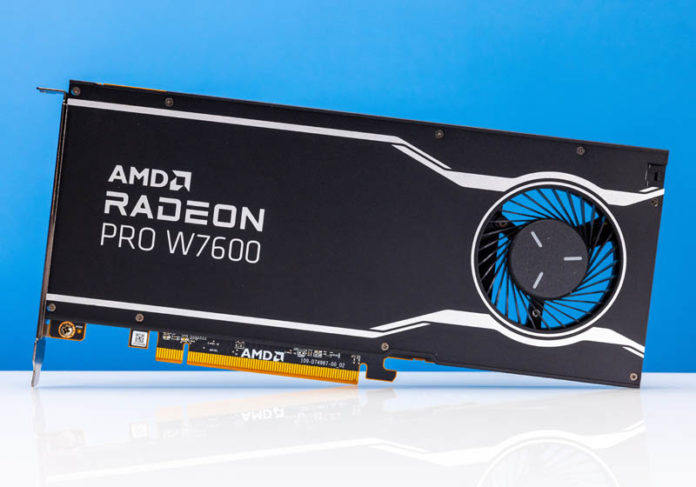



I’m always down for the workstation class GPUs that don’t suck down energy. It seems like computers are just getting more and more power hungry. A sub 150w GPU and a 70w gpu are great, and the price seems reasonable as well.
Nvidia workstation cards provide OpenGL driver that runs fast (GeForce OpenGL driver is performance capped) and driver for remote desktop OpenGL. What AMD workstation cards provide? It seems Radeon OpenGL performs well and not performance capped.
I’ll take workstation drivers on “gamer” cards thx. It’s the same silicon. “Workstation video cards” are the most successful FUD marketing scheme ever.
@hoohoo,
Surely it was possible on very early Quadro era, but nowadays it is impossible. I’ll just choose consumer Radeon if typical usage is OpenGL